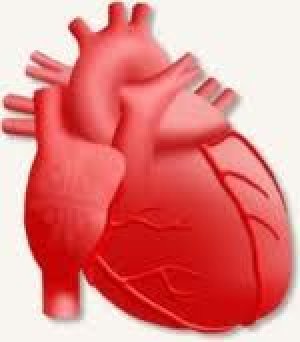
All iLive content is medically reviewed or fact checked to ensure as much factual accuracy as possible.
We have strict sourcing guidelines and only link to reputable media sites, academic research institutions and, whenever possible, medically peer reviewed studies. Note that the numbers in parentheses ([1], [2], etc.) are clickable links to these studies.
If you feel that any of our content is inaccurate, out-of-date, or otherwise questionable, please select it and press Ctrl + Enter.
The structure of a protein responsible for heart and nervous system health has been deciphered
Last reviewed: 30.06.2025
 ">
">Scientists at the University of Michigan (UM) have deciphered the structure of a protein that is an integral part of the process responsible for maintaining the health of the humanheart and nervous system.
The protein is cystathionine beta-synthase (SBC). CBS uses vitamin B6 to synthesize hydrogen sulfide (H2S), a gaseous signaling molecule that helps keep the heart and nervous system healthy. In animals, H2S induces a state of suspended animation, or hibernation, by lowering body temperature and slowing metabolism.
The work on deciphering the structure was carried out under the supervision of Ruma Banerjee, PhD, professor of biological chemistry at the University of Michigan Medical School, Janet Smith, PhD, research professor at the UM Life Sciences Institute, and their colleagues. The results are published in the journal Proceedings of the National Academy of Sciences.
"The structure of the CBS protein, which has eluded scientists for more than a decade, provides a wealth of new information about the enzyme's production of a gas that is particularly important for the brain," says Banerjee. "Deciphering this structure provides a basis for understanding the mutations that cause homocystinuria, an inherited disorder that affects the vision, skeletal, cardiovascular and central nervous systems."
The complete structure of CBS, seen for the first time, provides a molecular explanation for homocystinuria caused by defects in this protein.
The enzyme's activity is enhanced by SAMe (S-adenosylmethionine), a dietary supplement used as an antidepressant and anti-inflammatory. By binding to CBS, SAMe also increases hydrogen sulfide production.
"Understanding the molecular architecture of the CBS domain with which SAMe interacts opens the door to rational drug design to fine-tune hydrogen sulfide production for pharmacological purposes," said Markos Koutmos, PhD, a member of Smith's research team.
The scientists captured the CBS enzyme at two points in its complex chemical reaction, trapping two highly reactive chemical intermediates in the enzyme's active site. Their structures reveal details of how vitamin B6 helps CBS carry out the complex reactions that lead to the formation of hydrogen sulfide.
The important chemical details seen by the CBS researchers may also be useful in deciphering the structures of other human enzymes that depend on vitamin B6, of which there are more than 50.
